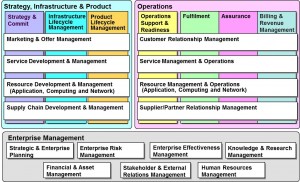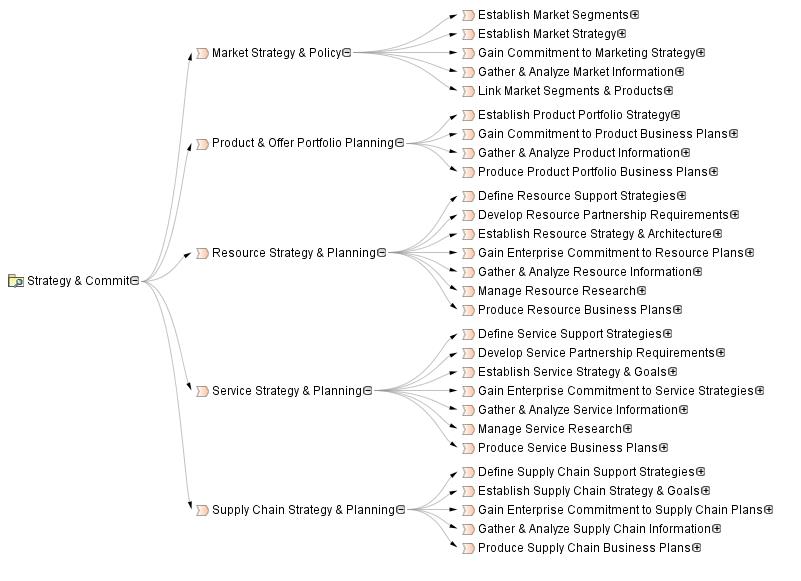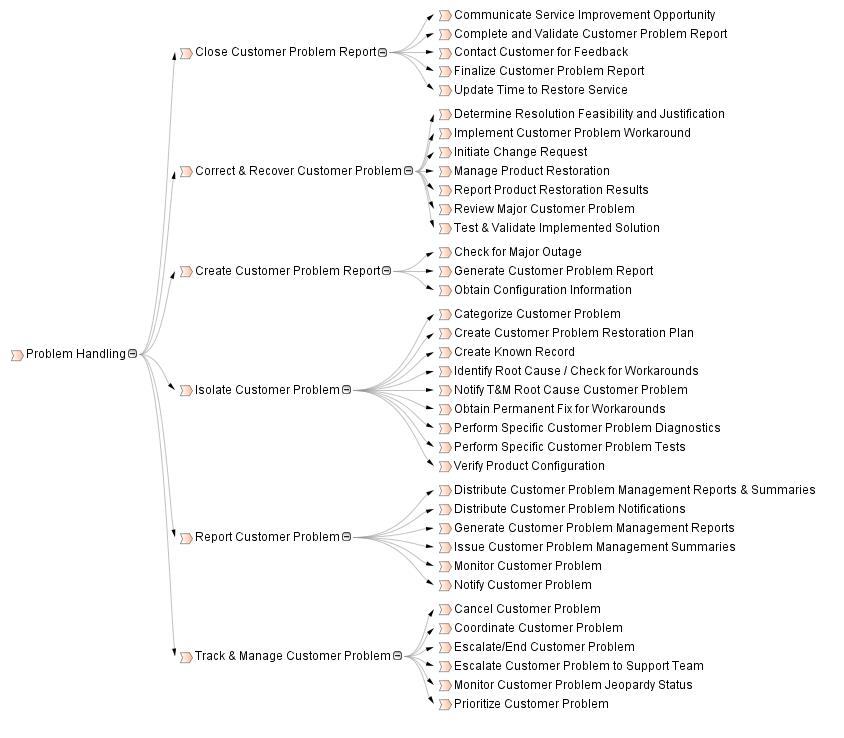The Business Process Framework is a hierarchical catalog and classification scheme of the key business processes required to run a service-focused business. At the conceptual level, the framework has three major level o process areas, reflecting major focuses within typical enterprises:
- Strategy, Infrastructure and Product
- Operations
- Enterprise Management
The Strategy, Infrastructure & Product (SIP) process area includes processes that develop strategy, commit to the firm, build infrastructure, develop and manage products, and that develop and manage the Supply Chain.
The Operations (OPS) process area is the traditional heart of the Communication Service Provider (CSP) enterprise, and of the Business Process Framework. It includes all operations processes that support the customer (and network) operations and management, as well as those that enable direct customer operations with the customer. These processes include both day-to-day and operations support and readiness processes.
The Enterprise Management process area includes basic business processes required to run any business. These processes focus on Enterprise Level processes, goals and objectives. These processes have interfaces with almost every other process in the enterprise, whether operational, product or infrastructure processes. These are sometimes considered corporate functions and/or processes.
The SIP and OPS Process Areas are subdivided by both horizontal and vertical level 1 process groupings:
Process decomposition of the TMF Frameworx Business Process Framework proceeds along the level 1 horizontal process groupings for both the SIP and OPS process areas. Shown below is an MD Cameo Business Modeler BPMN Processes Structure Map diagram of the SIP L0 with its 4 L1s and subsequent L2s.
The level 1 vertical process groupings represent a view of end-to-end processes within the business, such as those involved in the overall strategy setting and gaining commitment from the stakeholders. Vertical end-to-end processes typically span organizational boundaries, and so the end-end effectiveness of these processes is an area of concern to senior management and particularly the CEO. Vertical process groupings thus represent the C-level view of the Business Process Framework.
The Assurance vertical end-end process grouping is responsible for the execution of proactive and reactive maintenance activities to ensure that services provided to customers are continuously available and performing to SLA or QoS performance levels. It performs continuous resource status and performance monitoring to proactively detect possible failures. It collects performance data and analyzes them to identify potential problems and resolve them without impact to the customer. This process manages the SLAs and reports service performance to the customer. It receives trouble reports from the customer, informs the customer of the trouble status, and ensures restoration and repair, as well as ensuring a delighted customer.
Within the Assurance vertical at the L1 CRM horizontal is an L2 process responsible for receiving trouble reports from customers, resolving them to the customer’s satisfaction and providing meaningful status on repair and/or restoration activity to the customer. This process is named Problem Handling and is shown here with complete hierarchical decomposition to the L4 leaf level of the TMF Business Process Framwork:
The L3 Isolate Customer Problem process is tasked with identifying the root cause of the customer problem. The responsibilities of these processes include, but are not limited to:
- Verifying whether the customer is using the purchased product offering correctly; and
- Performing diagnostics based on the customer provided information to determine whether the root cause of the customer problem is linked to the underlying services.
The Isolate Customer Problem processes will make the results of the root cause analysis available to other processes. The Isolate Customer Problem processes will update the open customer problem report, as required during the assessment, and when the root cause has been identified. The Isolate Customer Problem processes will notify the Track & Manage Customer Problem processes when the analysis is complete.
This defined activity can be represented using an MD Cameo Business Modeler BPMN Process Diagram for an Isolate Customer Problem L4 flow:
In total the TMF Business Process Framework version 13.5 contains 1,407 process elements organized in the decomposition hierarchy introduced in this article. The Business Process Framework is used by CSPs to support many business needs, including but not limited to:
- Scope
- Assess
- Gap Analysis
- Plan
- Measure
- Review
- Adjust
In the next article in this series we’ll look at the TMF Frameworx Information Framework also known as the SID and how it relates to the Business Process Framework.





